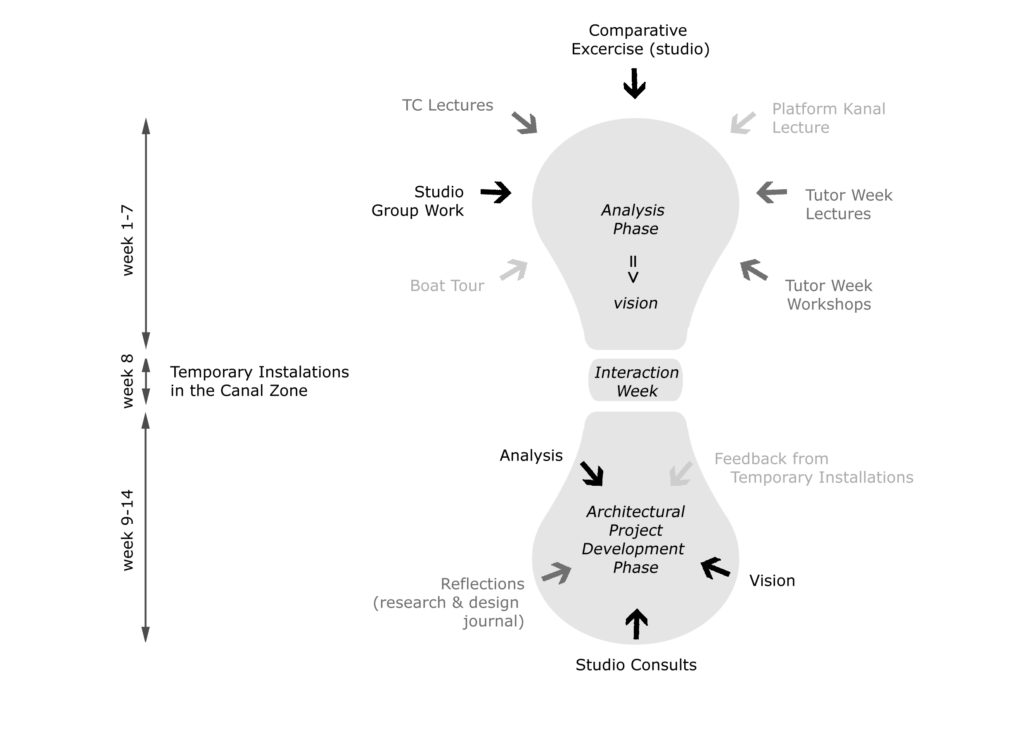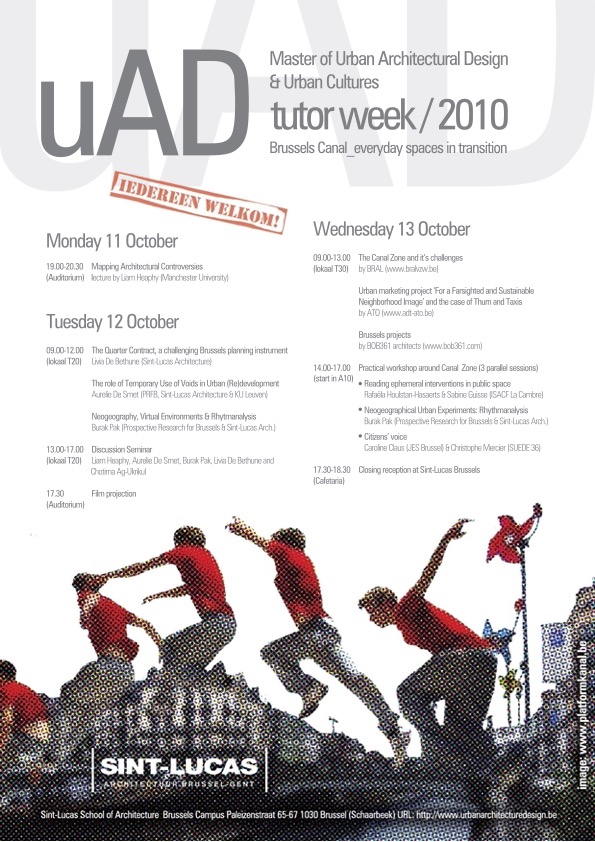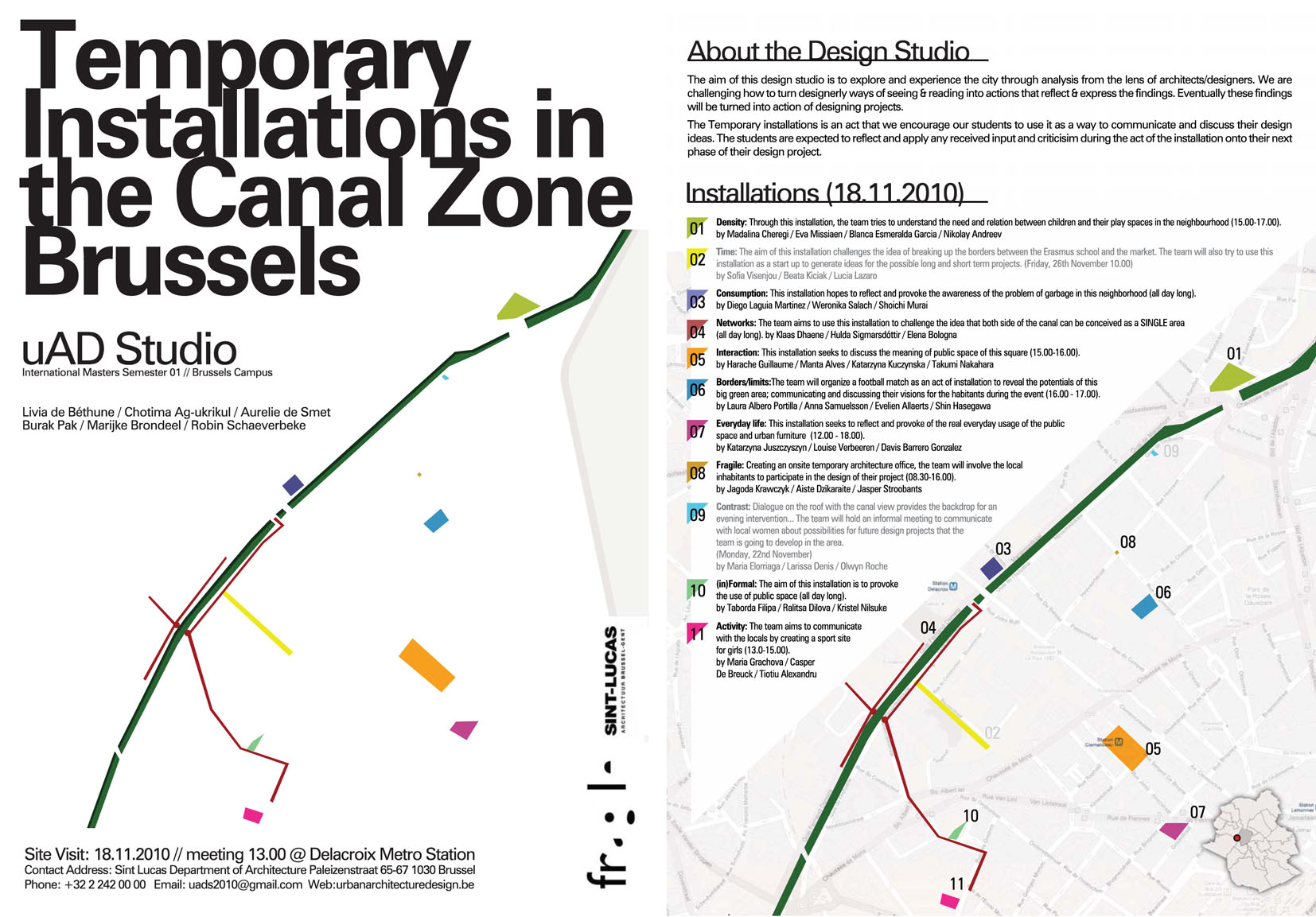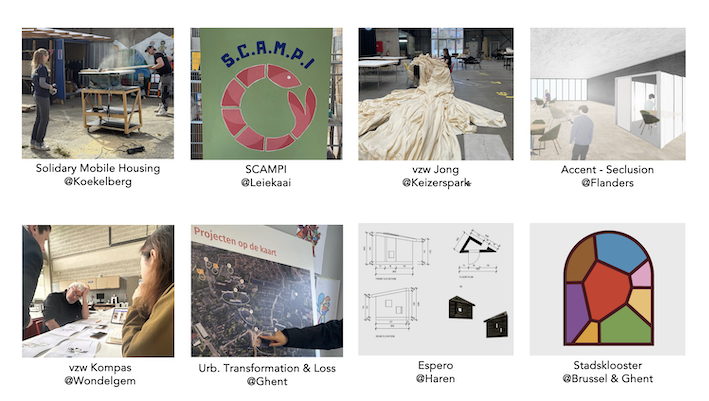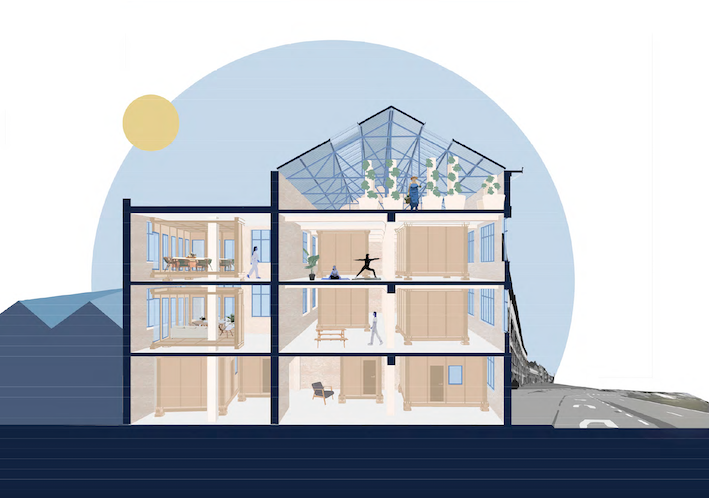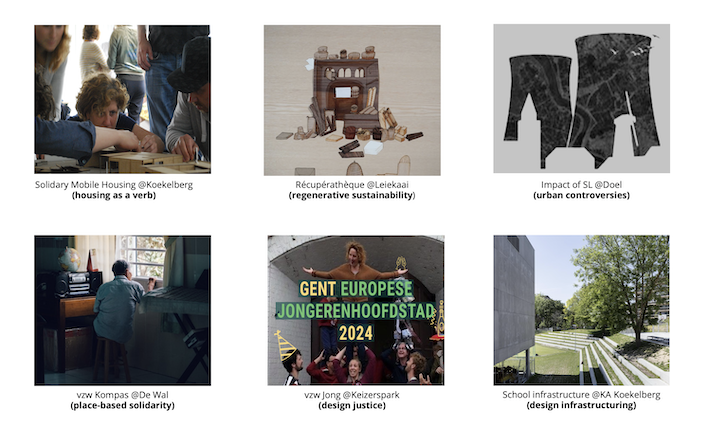Co-organisation and tutoring of a theoretical component (TC) for the international Master of Architecture of the Sint-Lucas School of Architecture, campus Brussels, linked to the design studio ‘ Brussels canal – everyday spaces in transition’ (Tutors: Livia de Bethune and Chotima Ag-Ukrikul).
The aim of the TC was for the participating future urban planners and designers to learn to recognise and acknowledge the potential of temporary use practices to make valuable contributions to their urban projects. Through the organization of this TC, together with the studio coordinators, we presented the preliminary conclusions of the ongoing research project ‘The Role of Temporary Use of urban Waiting Spaces’, to young (urban) designers and further explored the potential of this approach in practice, together with them.
In the context of this course, notions such as ‘Temporariness as a laboratory for the permanent’, ‘research by design’, ‘mapping controversies’ and ‘temporary use’ were introduced to the students. To support them in forming strong visions for the project area, external experts were moreover invited to give guest lectures on a variety of related topics. Thereafter, the students were asked to communicate and test their own visions regarding the future development of the area (arising out of their previous analysis), by setting up a temporary installation/intervention during the ‘Interaction Week’. Numerous interesting temporary installations/interventions were created, such as:
- the ‘Huge Mikado’, which illustrated how an urban game can invite people to interact with each other and to start looking at their everyday environment in a different way.
- the ‘Garbage Man’ installation, which enabled the students to engage in (verbal and non-verbal) communication with the ‘users’ of a derelict site. During the process of building the installation, the group members did observations and informal interviews with the users. Afterwards, they followed up the evolution of the installation. In addition, they asked for comments on their work through Facebook.
- the ‘Temporary Architectural Office’, which illustrated how designers can talk in an unofficial way about a small-scale architectural project not only to the people living adjacent to it but also to passers-by.
The installations and interventions were presented to a broader public during a walk guided by the TC and studio tutors. Based on the interactions and feedback the students received through their installations/interventions, they drew conclusions for the development of an architectural design project proposal, which would stimulate transitions in this urban area.
Type of project:
architectural design learning
Location:
Brussels
Date:
2010-2011 (first semester)
Project partners:
Livia de Bethune, Chotima Ag-Ukrikul, Aurelie De Smet
Role:
course tutor
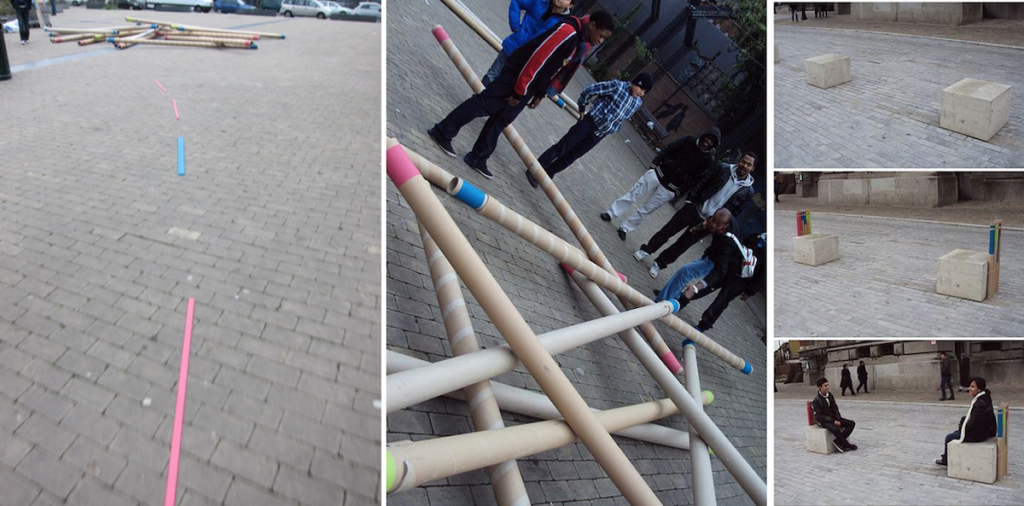
(David Barrero Gonzalez, Louise Verbeeren, Katarzyna Juszczyszyn)
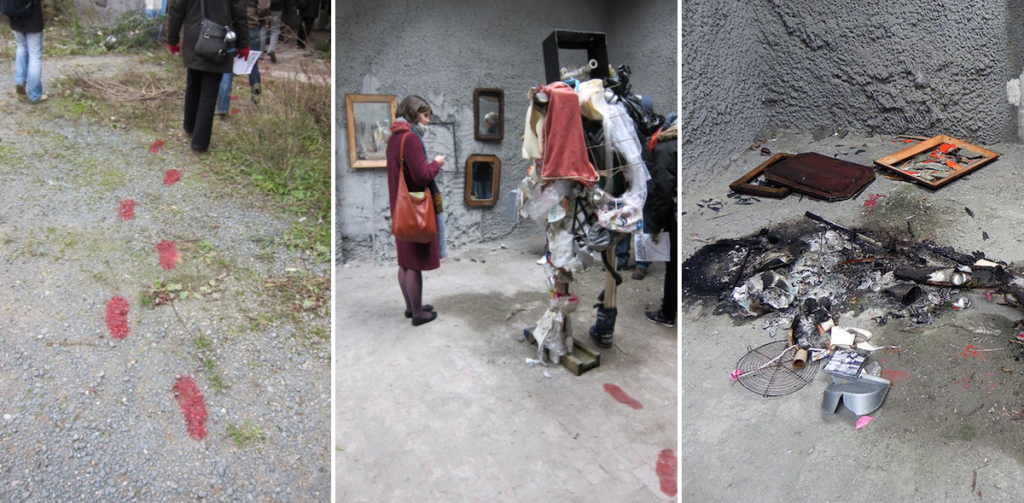
(Diego Laguia Martinez, Weronika Salach, Soichi Murai)
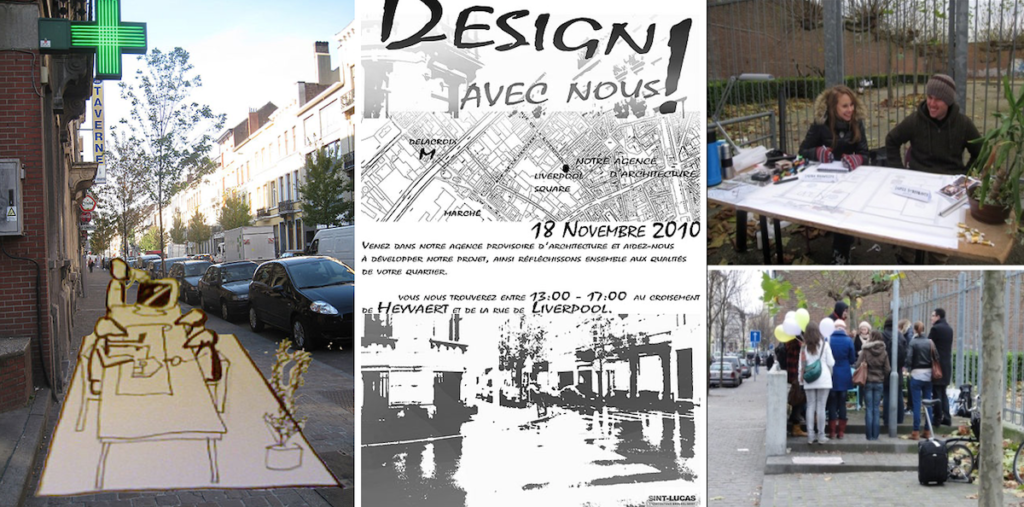
(Jagoda Krawczyk, Aiste Dzikaraite, Jasper Stroobant)
